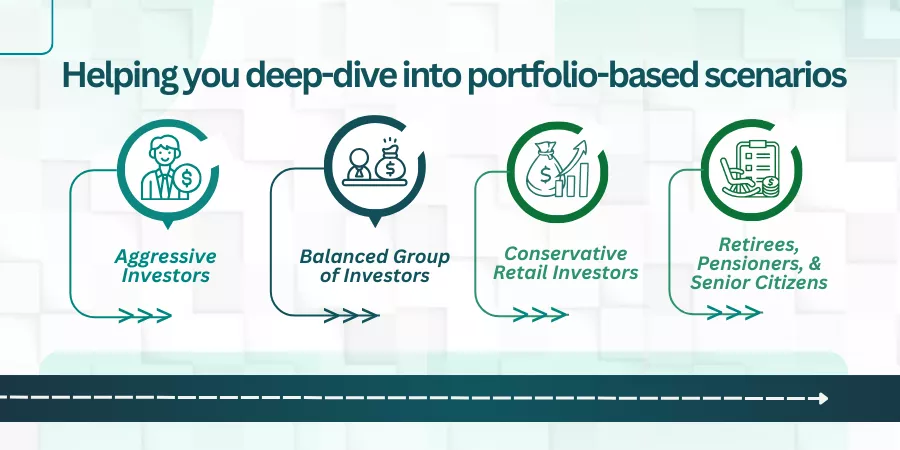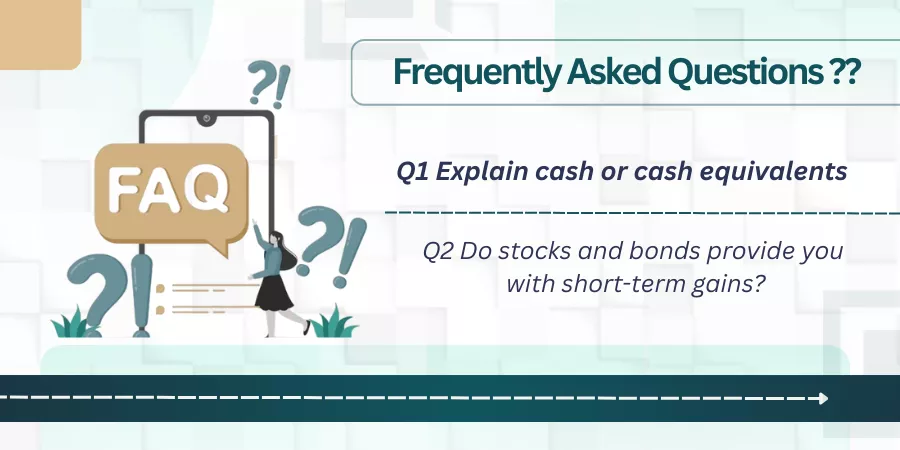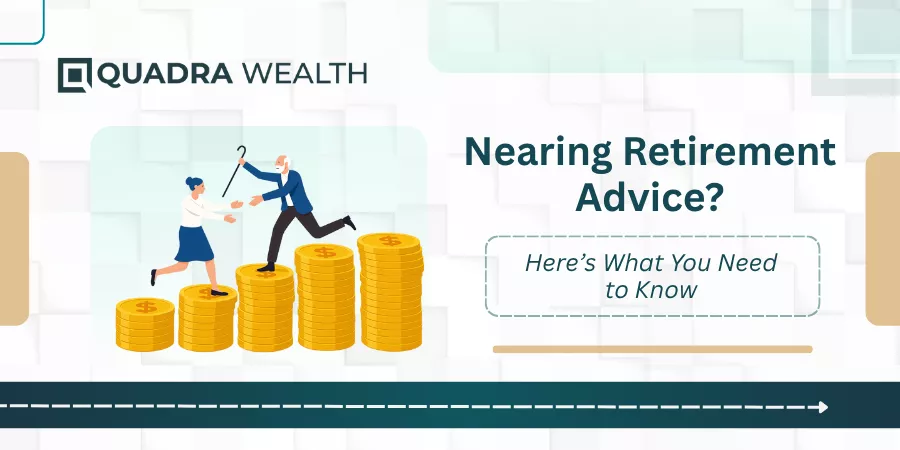Introduction
As a newbie investor, you might be a little sceptical about how to invest huge sums of money in investment portfolios. Sometimes, you may need cash-out scenarios. This is in the wake of a sudden hospitalization of your near and dear ones. Else, you may have to pay the college fees for your son or daughter in lieu of a semester.
Therefore, you look for a certain level of cash liquidity on your investment portfolios to ease up things for you as such. As you may not have any other sources of income other than your paycheck that gets delivered to you month on month.
On this parlance, let us deep dive into the blog topic ‘What Percent Of Your Portfolio Must Be In Cash?’
What Percent of Your Portfolio Must Be In Cash- Insights Explained
This is an underlying question that runs through each of our minds. You always want to know the percentage of your portfolio that gets liquidated into cash.
You may have needs for your own money for buying fruits, veggies, or groceries that may run beyond your salary amount. Thanks to the inflation that keeps growing and is unstoppable. If you run your own business or enterprise, you have a constant need for cash-based liquid requirements to buy raw materials from suppliers and convert them into finished goods for your consumers.
Hence, the need for a cash-based liquidity is always higher on the cards. Industry experts clearly say to us that an ideal investment portfolio must have a 10 to 15 % liquidity so that your portfolios are ideally suited ones.
This means you can withdraw from your investment amounts now and then without attracting any kind of penalty fees or early withdrawal taxes whatsoever applicable in your geographical location where you reside in.
However, Investment houses apply a minimum lock-in on your investment portfolios. This is a lock-in period that can run anywhere between 3 to 5 years. Here, you allow your investment portfolios to grow for a while and then start withdrawing from your investment vault.
Why do you keep cash liquidity inside your portfolio?
These are the following reasons as to why you keep cash liquidity inside your investment portfolio. Helping you through with a rundown of pointers that are related to the same:
A- To meet immediate financial needs
You need immediate cash to tackle near-future emergencies in a hassle-free manner, indeed. These expenses pertain to:
- Medical emergencies or sudden hospitalization of family members or loved ones
- Tackle sudden job losses or retrenchment scenarios
- To pay medical bills for ailing family members
- To arrange for business contingencies for enterprise owners
B- To Tackle Volatile Market Scenarios
Putting all your money into stock markets can turn into heartbreak for most of you out there. This is on account of dripping or falling and rising or inflating market prices of your stocks, shares, or futures. You can look for cash liquidity within stock market portfolios or include bonds or capital-protected assets inside your investment portfolios.
This way, you can get cash as and when the dire need for liquid money arises. Veteran investors like Warren Buffett hold huge cash holdings to capitalize fon at opportunities in the market. You can also call the trend a ‘dry powder market opportunity’.
C- To tackle risk management scenarios
You need a certain degree of cash liquidity to maintain an optimal risk management equation with respect to your investment-based finances. When you have a certain cash ratio that is attributed to your investment portfolio, then you can tackle the volatility that is associated with your investment portfolio. This factor helps the conservative segment of retail investors, comprising retirees, pensioners, and senior citizens who are 65 plus.
For instance, a retiree might need an investment plan that comprises cash reserves to the equivalent of 15- 25% to avoid distress selling equities in the event of an economic downturn or a recession.
While a younger investor just needs 2-5% of cash equivalent in the investment portfolio. He can keep his portfolio untouched for long-term growth and financial development.
Helping you deep-dive into portfolio-based scenarios

Here are a couple of portfolio-based scenarios you can have a look at. Helping you with a rundown on the same:
A- Aggressive Investors
If you are an aggressive investor, you must be in the age group of 20s or in your 30s. Here, you can look for long-term time horizon investment portfolios with a 2-5% cash equivalent to help you make ends meet.
B- Balanced Group of Investors
Are you in your 40s or 50s? Then, you can look for more balanced investment portfolios. Here, you can look for investment portfolios that provide you with a mix of growth and income. You might need a 10-12% cash equivalent component to meet your near-term financial contingencies. Say, like getting yourself a brand new car.
C- Conservative Retail Investors/ Pre-Retirees
Are you a conservative retail investor or a pre-retiree? Then you must be in the 55-65 age group indeed. Your investment portfolio must comprise a 15 to 20 percent cash equivalent, as you might need higher liquidity to get your daughter or son married. Or, to buy a brand new home for yourself. Here, you look for an investment portfolio that promises growth while allowing you better liquidity on your investment derivatives, too.
D- Retirees, Pensioners, and Senior Citizens
Are you a retiree, pensioner, or senior citizen? Then, you must be above 65 years of age. Here, you might no longer have access to your regular 9-5 jobs across the manufacturing or service sectors. You might need investment portfolios that allow tax-free cash withdrawals any number of times. This way, you can fund your living expenses while also aiming to give complete protection for your capital vault. Therefore, you might want a cash equivalent component of 25- 30% on an average.
What are the options to hold your cash effectively?
Cash must never be kept inside bank accounts as idle money. This is because growing inflation can wipe out your cash dispensables in no time.
Here are effective ways and means by which you can allow your cash component to beat inflationary concerns. Let us figure out what they are:
A- Invest via high-yield savings accounts
In developing economies like India and Singapore, private merger firms and investment hubs have introduced savings account schemes for old-age citizens, like retirees or pensioners. Here, your cash accounts can attract interest rates of 10-12%. This way, you allow your simple savings account to garner better interest rates over regular banks that merely offer a 4-5% interest rate per annum.
B- Money Market Funds
Money market funds work similarly to mutual funds that invest your money in capital-safe instruments. These comprise treasury bills, commercial paper, and certificates of deposit, or CDs. These products offer capital preservation, cash liquidity, and provide modest rates of return on investment portfolios. This way, investors get safer havens to prevent from cash from eroding due to higher inflation rates that grapples growing economies on the whole.
C- Insurance Products
You can invest your money in insurance products to get you a whole range of insurance benefits like health insurance, medical plans, life insurance, term insurance and insurance cum investment portfolios. This way, you cover your emergencies or contingencies plus receive cash backs or interest payments on a periodic basis.
D- Certificates of Deposits or CDs
You can look for certificates of deposits or CDs if you are a highly risk-averse investor. Here, your money gets invested via U.S. Treasury bills and mortgage bonds that are highly capital safe. You can also be entitled to receive a whole fleet of cash benefits and tax-free withdrawals via government-aided investment products.
These are investment portfolios that can help you mitigate volatile market risks and get you cash-related offers to maintain your liquidity.
What are the pros of holding cash?
These are the benefits or pros of holding cash reserves. Helping you through a rundown on the same:
A- Enjoy a higher level of liquidity
When you hold cash reserves, you enjoy a better level of liquidity to buy consumables. These include buying refrigerators, tape recorders and LCD TV systems.
B- Reducing your dependency on plastic money
When you hold liquid cash inside your bank accounts or savings account, you reduce your overall dependency on using credit cards, which are also known as plastic money. And credit card companies levy heavy rates of interest on using cards to buy products or services.
What are the overall cons and risks of holding too much cash inside your savings bank accounts?
These are the overall cons and risks of holding too much cash inside your savings accounts. Helping you through with a rundown of pointers on the same:
A- Lower rates of return
Savings bank accounts offer their investors with very low rates of returns. The interest rates can range 4 to 5% per annum. This is a very low RoI as compared to what you receive from bonds, equities or other diversified investment portfolios.
B- Inflation-based erosion
Your bank accounts can erode funds due to growing interest rates on account of exploding inflation rates. Your purchasing power cannot cope with growing inflation when you keep your money lodged inside savings accounts.
C- Opportunity costs
When you keep idle cash inside your bank accounts, you lose attractive investment opportunities that can provide you with better value for your money. You can opt for customized investment solutions that give you more for what you earn.
The Bottom Line
You must look for tailored investment solutions to grow your money on an exponential scale. You must approach an investment advisor who can help you chart out customized investment plans that align with your immediate or future financial goals seamlessly. What are your thoughts on this? Do let us know in the comments below!
Frequently Asked Questions or FAQs

Explain cash or cash equivalents
Answer: Cash and Cash equivalents refer to cash in your portfolio. Interest payouts, dividends, coupons, and profits are cash payouts you get from investment portfolios. Your cash position must be good for you to capitalize on your investment’s liquidity.
Do stocks and bonds provide you with short-term gains?
Answer: Stocks provide daily profits for intraday traders. However, in economic downturns wherein the prices of stocks or shares plummet badly, and you have bought them, then you incur losses. The cash on hand improves the net worth of your investment vehicles and offers you with emergency fund security.






